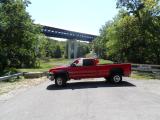- Replies 37
- Views 5k
- Created
- Last Reply
Top Posters In This Topic
-
 David W Gray 11 posts
David W Gray 11 posts -
 AH64ID 10 posts
AH64ID 10 posts -
 Mopar1973Man 7 posts
Mopar1973Man 7 posts -
 diesel4life 7 posts
diesel4life 7 posts






I've go a 23' travel trailer, bumper pull. Id love to have a bigger trailer. Sometimes I want a smaller one. But as long as you're towing a piece of plywood down the road, where is the line where you start using a lot more fuel. The wind resistance is already there. So how much bigger can I go without seeing a big jump in fuel consumption and stress on the tow vehicle? Currently 7,000# GVW.
Edited by joecool911